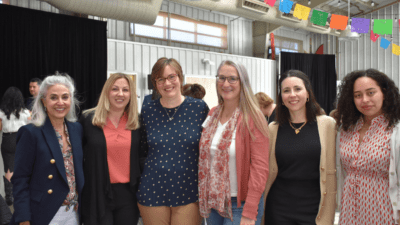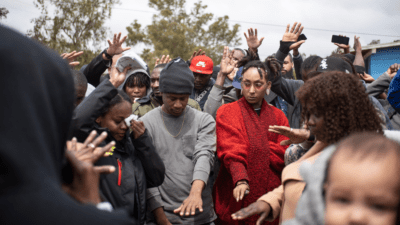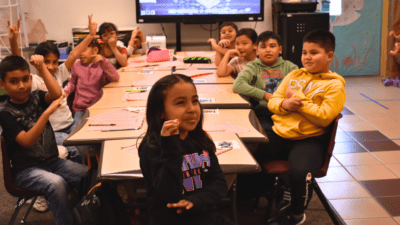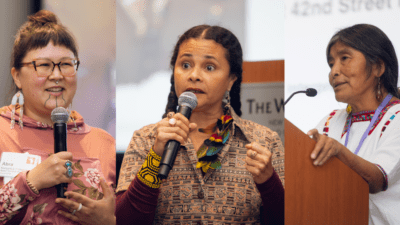In a digital age marked by connectivity, the National Day of Racial Healing 2024 witnessed a powerful convergence of minds and hearts through virtual events, underscoring the transformative potential of technology in fostering understanding and unity. A diverse range of discussions, from exploring Martin Luther King Jr.’s profound legacy to envisioning a world free of racism and addressing colorism within the Latino community, showcased the capacity of digital platform engagement to bridge geographical gaps and unite individuals in a collective journey towards healing and equity.
Rev. Sen. Raphael Warnock and author Jonathan Eig explore Martin Luther King Jr.’s values, leadership and social impact
To celebrate the National Day of Racial Healing, more than 500 people from across the country and world – including Rwanda and Cote D’Ivoire – tuned into a conversation between Sen. Rev. Raphael Warnock, D-Ga., and Jonathan Eig, author of “King: A Life,” about Martin Luther King Jr.’s legacy. The discussion, moderated by Anne Mosle from the Aspen Institute, explored how King’s values informed his leadership.
“Over the last 40 years since establishing Martin Luther King Jr. Day, we’ve lost sight of Dr. King as a human being … he was a radical,” said Eig. He praised King’s selflessness, moral conviction and connection to his faith as King spoke out on issues like the Vietnam War, poverty, human rights and hunger, despite his advisors’ counsel to stay focused on civil rights.
Sen. Warnock, who continues the legacy in King’s footsteps as senior pastor of Ebenezer Baptist Church, expressed how King using his faith “not as a weapon but as a bridge” inspired him to become a pastor and enter the world of civil and human rights activism. “I push hard against people who say nothing has changed. When I was born, Georgia had two effective senators – both segregationists…. I now sit in [one of those seats] because of the work of Dr. King and others in the movement.”
Imagining a world free of racism with the Alaska Black Caucus
What would a world free of racism look like? How would it feel? President and CEO of the Alaska Black Caucus Celeste Hodge Growden and community leaders from across Alaska discussed these questions and explored what it would take to achieve this vision in honor of the National Day of Racial Healing.
Tasha Hotch, an Alaska Native, said a world without racism for a century sounds amazing: “It looks like equal opportunity in the workforce and equitable treatment in housing and in the medical industry. It means no competition just because someone looks different from you.”
Rev. Patricia Wilson-Cones, associate minister at First American Baptist Church in Anchorage, Alaska, opened up about important strategies to combat racism, sexism and homophobia. Engaging in candid and honest conversations about these topics, she asserted, is mandatory to foster healthy relationships, even if it may elicit discomfort.
Conversations about healing can also reveal deep, unresolved hurt, explained fellow panelist Cal Williams, a civil rights activist who grew up seeing so much violence against Black people that he had “no tears left to cry” when he heard about the murder of George Floyd. It shocked him. “At that point,” he said, “I knew I was desensitized, and I don’t think I’ll be alive long enough to heal from this trauma.”
Anchorage resident Thea Agnew Bemben said that one step toward eliminating racism is to invite someone who does not look like you into your personal and professional circles.
Remembering Martin Luther King Jr., Ella Baker and the power of collective unity
To honor the National Day of Racial Healing and celebrate the legacy of Martin Luther King Jr., Barbara Ransby, Ph.D., a renowned historian, writer, professor and activist, gave a lecture to the Northeastern Illinois University community about King, Ella Baker and the importance of unity in achieving racial equity.
Baker, a friend, collaborator and critic of King, is known for founding the Young Negroes Cooperative League and the Student Nonviolent Coordinating Committee (SNCC). She was also a leader in the NAACP who successfully recruited dozens of members in the South, helped coordinate the Montgomery Bus Boycott and helped King establish the Southern Christian Leadership Conference.
Both King and Baker believed in the power of the collective in advancing a common cause. “That is how we must combat the current political and social climate for people of color and marginalized communities in present day,” said Ransby, and added that the political and social climate that existed in 1967 and 1968 is almost identical to the political and social climate of today. “We are seeing an assault on Dr. King’s legacy in real time,” she said. Ransby cited Gov. Ron DeSantis’ recent statement about Florida being “where woke goes to die” with the ban on Black studies, DEI (diversity, equity and inclusion), Indigenous studies, queer studies and Black feminism from schools; efforts to suppress voters and draw unfair voting districts; and the recent firing of now former Harvard University President Claudine Gay. “Gay’s termination was not about plagiarism or antisemitism, but rather redemption for those who believe in overt discrimination,” said Ransby.
“We cannot understand King just by his ‘I Have a Dream’ speech, nor can we understand Baker by exclusively learning about the SNCC. We must study their whole lives,” said Ransby. “It was not King who made the movement but the movement who made King.”
Healing and transgressing colorism in the Latino community
Many in the Latino community believe that part of the racial healing process in their experience is colorism as tied to anti-indigeneity and anti-Blackness. This type of discrimination has caused deep divisions between Latinos with darker and lighter skin tones. For the National Day of Racial Healing, Lideramos, a National Latino Leadership Alliance, hosted an open discussion that invited community members to share their experiences with colorism and to learn what can be done to achieve racial equity and healing in the community.
Many participants identified with feeling “othered” by different racial and ethnic groups at various points in their lives and discussed the harm they experienced because of it. Some recounted the enduring impact of long-standing stereotypes regarding skin tone and feeling inferior because of their darker skin tone. These harmful beliefs continue to perpetuate the cycle of colorism generation after generation. Combating colorism in the Latino community requires bold, intentional steps, noted one participant. “We have to tear it open to fix it,” they said. Healing in the community will take time, but as Lideramos Executive Director Angela Mictlanxochitl expressed, small steps are key to progress. This includes confronting stereotypes, supporting one another, creating spaces to have conversations and expressing gratitude for the opportunity to engage in the conversation.








Comments